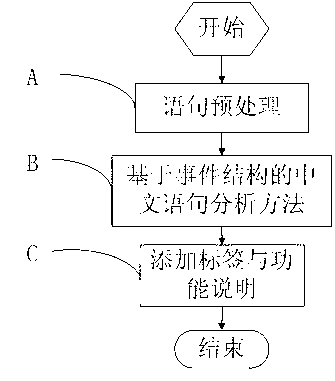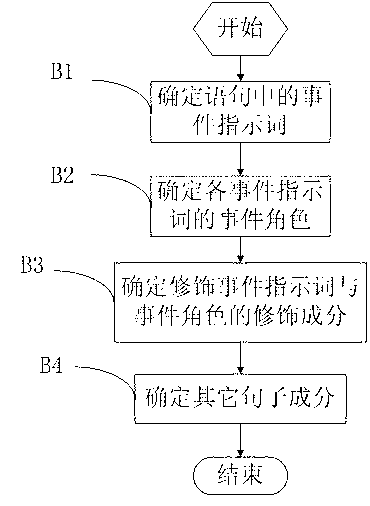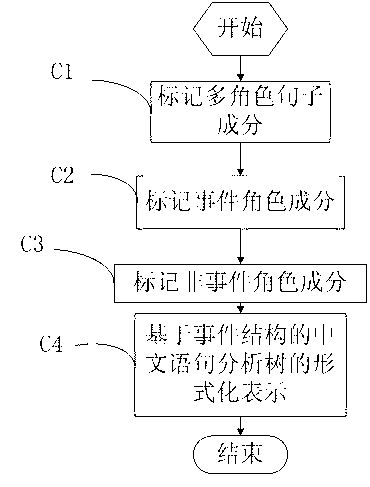Event-structure-based Chinese statement analysis method
A technology of event structure and analysis method, applied in special data processing applications, instruments, electrical and digital data processing, etc.
- Summary
- Abstract
- Description
- Claims
- Application Information
AI Technical Summary
Problems solved by technology
Method used
Image
Examples
example 1
[0028] Example 1: Xiao Wang believes that Xiao Zhang will come.
[0029] The effect after preprocessing is as follows (word is the word label, id records the word number, cont records the word string, pos records the part-of-speech tag, parent records the id number of the parent node, and relation records the dependency relationship, where nh indicates the name of the person, v indicates the verb, and d Indicates an adverb, wp indicates a punctuation mark, SBV indicates a subject-predicate relationship, HED indicates a central verb, VOB indicates a verb-object relationship, and ADV indicates a verb-in-statement relationship):
[0030]
[0031]
[0032]
[0033]
[0034]
[0035]
[0036]
[0037]
[0038] B. Chinese sentence analysis steps based on event structure, refer to figure 2 : Perform Chinese sentence analysis based on the event structure on the preprocessed sentence, the specific steps are as follows;
[0039] B1, determine the event indicator in the s...
example 2
[0042] Example 2: At 14:28 on May 12, a level 7.8 occurred in Wenchuan, Sichuan earthquake .
example 3
[0043] Example 3: Her appearance is in the fire was severely damaged.
[0044] B12. Substantive verbs
[0045] Substantive verbs are general verbs, which are used to express actions or behaviors. They have the main grammatical features of verbs and are typical verbs, such as the underlined words "swimming" and "learning" in the following sentences.
PUM
 Login to View More
Login to View More Abstract
Description
Claims
Application Information
 Login to View More
Login to View More - R&D
- Intellectual Property
- Life Sciences
- Materials
- Tech Scout
- Unparalleled Data Quality
- Higher Quality Content
- 60% Fewer Hallucinations
Browse by: Latest US Patents, China's latest patents, Technical Efficacy Thesaurus, Application Domain, Technology Topic, Popular Technical Reports.
© 2025 PatSnap. All rights reserved.Legal|Privacy policy|Modern Slavery Act Transparency Statement|Sitemap|About US| Contact US: help@patsnap.com



